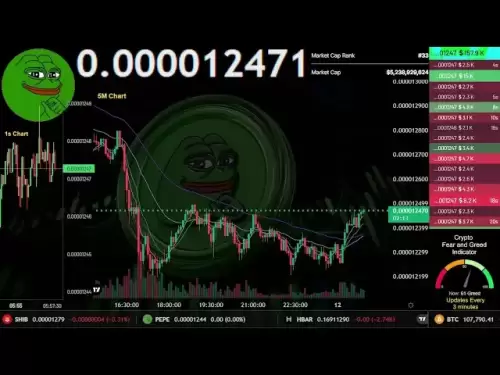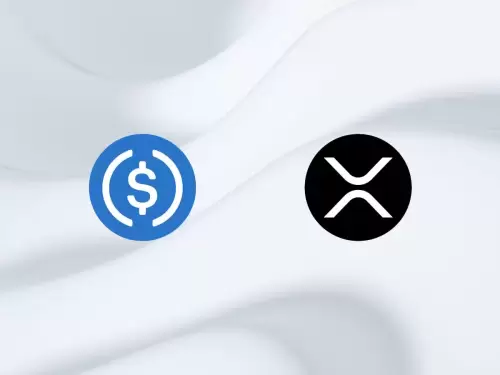 |
|
 |
|
 |
|
 |
|
 |
|
 |
|
 |
|
 |
|
 |
|
 |
|
 |
|
 |
|
 |
|
 |
|
 |
|

Bitcoin (BTC) traders are eyeing the $100,000 level in the coming days, a euphoric trade that could be short-lived as May’s seasonality approaches, and altcoins may be vulnerable to pullbacks, analysts said.
Bitcoin broke out earlier this week as traders remained focused on the next move in the U.S. macroeconomic data and the implications for crypto.
“Historically, the next couple of months have been weak for financial markets, with many investors abiding by the Sell in May and Walk Away adage,” Jeff Mei, COO at crypto exchange BTSE, told CoinDesk in a Telegram message.
“That being said, markets have significantly underperformed over the last few months, but this year could buck the trend, with Bitcoin hitting $97K and other growth stocks coming back over the last few weeks. This past week's weak GDP numbers coming out of the U.S. indicate some risk, as another report of negative GDP growth next quarter would indicate a recession, but rate cuts could lead to a rebound as well,” Mei added.
The adage “Sell in May and go away” is a long-standing seasonal saying in traditional financial markets. It suggests that investors should sell their holdings at the beginning of May and return to the market around November, based on the belief that equity markets underperform during the summer due to lower trading volumes, reduced institutional activity, and historical returns data.
The phrase dates back to the early days of London Stock Exchange and was originally “Sell in May and go away, come back on St. Leger’s Day,” referencing a mid-September horse race.
What data shows
U.S. stock markets have shown weaker performance from May through October than from November through April, leading to the strategy becoming a seasonal rule-of-thumb for some investors.
Bitcoin also shows recurring seasonal patterns, often influenced by macro cycles, institutional flows, and retail sentiment. CoinGlass data show the asset’s May performance has been negative or muted recently.
In 2021, BTC dropped 35%, one of its worst months that year. In 2022, May was again negative, with a 15% drop amid Luna’s collapse. In 2023, BTC was flat to mildly positive, reflecting muted volatility.BTC popped up 11% last May and ended May 2019 up 52% — a standout performance from all months following 2018, when crypto markets are generally thought to have matured after that year’s altcoin cycle.
Red May months are followed by more declines in June, the data shows, with four of the past five June months ending in red.
These patterns don’t guarantee future performance, they suggest that crypto markets may be increasingly reacting to the same macro and seasonal sentiment as equities, especially as more institutional capital enters the space.
Sign of caution?
Traders may grow cautious based on historical price seasonality and fading momentum after strong Q1 rallies. Altcoins, especially meme coins, may be particularly vulnerable to pullbacks, given their recent hype-driven rallies and speculative flows.
“Since 1950, the S&P 500 has delivered an average gain of just 1.8% from May through October, with positive returns in about 65% of those six-month periods—well below the stronger performance seen from November through April,” Vugar Usi Zade, COO at crypto exchange Bitget, told CoinDesk in a Telegram message.
Over the past 12 years, average Q2 returns (April–June) for BTC have stood at 26%, but with a median of only 7.5% — a sign of outlier-driven performance and recurring volatility.
By Q3 (July–September), the average return drops to 6%, and the median turns slightly negative, suggesting a pattern of post-Q2 fatigue or consolidation, Zade added, citing data.
“This seasonality overlap suggests caution heading into May. Historically, Q4 marks Bitcoin’s strongest seasonal period, with an average return of +85.4% and a median of +52.3%, whereas Q3 tends to deliver more muted or negative outcomes,” Zade said.
In short, while Wall Street calendars don’t bind crypto, market psychology still responds to narratives, and “Sell in May” could become a self-fulfilling prophecy — especially if technicals start to crack and sentiment flips.
免責聲明:info@kdj.com
所提供的資訊並非交易建議。 kDJ.com對任何基於本文提供的資訊進行的投資不承擔任何責任。加密貨幣波動性較大,建議您充分研究後謹慎投資!
如果您認為本網站使用的內容侵犯了您的版權,請立即聯絡我們(info@kdj.com),我們將及時刪除。
-

- 這些天關於比特幣有很多努力
- 2025-06-12 23:00:12
- 在2025年5月22日獲得新的$ 10萬美元的新歷史上,$ btc一直以低於該商標來回交易
-

-

- 位於諾里奇附近的黃金先令可能只是一個大小的指甲,但它充滿了歷史
- 2025-06-12 22:56:40
- 閱讀此故事時,您將學到的內容:
-

- 由於1.16億個模因硬幣被從流通中刪除
- 2025-06-12 22:55:13
- Shibburn Wallet Tracking Service報告說,過去一天發生了巨大的濕度燃燒率跳高。
-

-

- 罕見的7世紀金幣描繪了在英國領域發現的跳舞人
- 2025-06-12 22:50:12
- 一位金屬探測者在英國領域發現了七世紀的稀有金幣。硬幣是有史以來第一個同類的席位,包括對男人跳舞的描繪。
-

- USDC即將來到XRP Ledger
- 2025-06-12 22:50:12
- Circle已正式在XRP Ledger上推出了USDC,這使得無需橋樑而無需橋樑即可直接在網絡上訪問世界上的第二大穩定。
-

- 比特幣的機構採用看到了新一波的公司投資
- 2025-06-12 22:45:12
- 比特幣的機構採用是看到了新的公司投資浪潮,在通過貿易協定或有爭議的美國支出法案之前,該浪潮將從更全球的不確定性中受益。
-

- 加密貨幣越來越正常,從使用它的人數到使用它的人的類型
- 2025-06-12 22:45:12
- 雖然比特幣(BTC)和加密新聞最近都集中在政治和機構上,但顯示政府政策變得越來越接受




























































